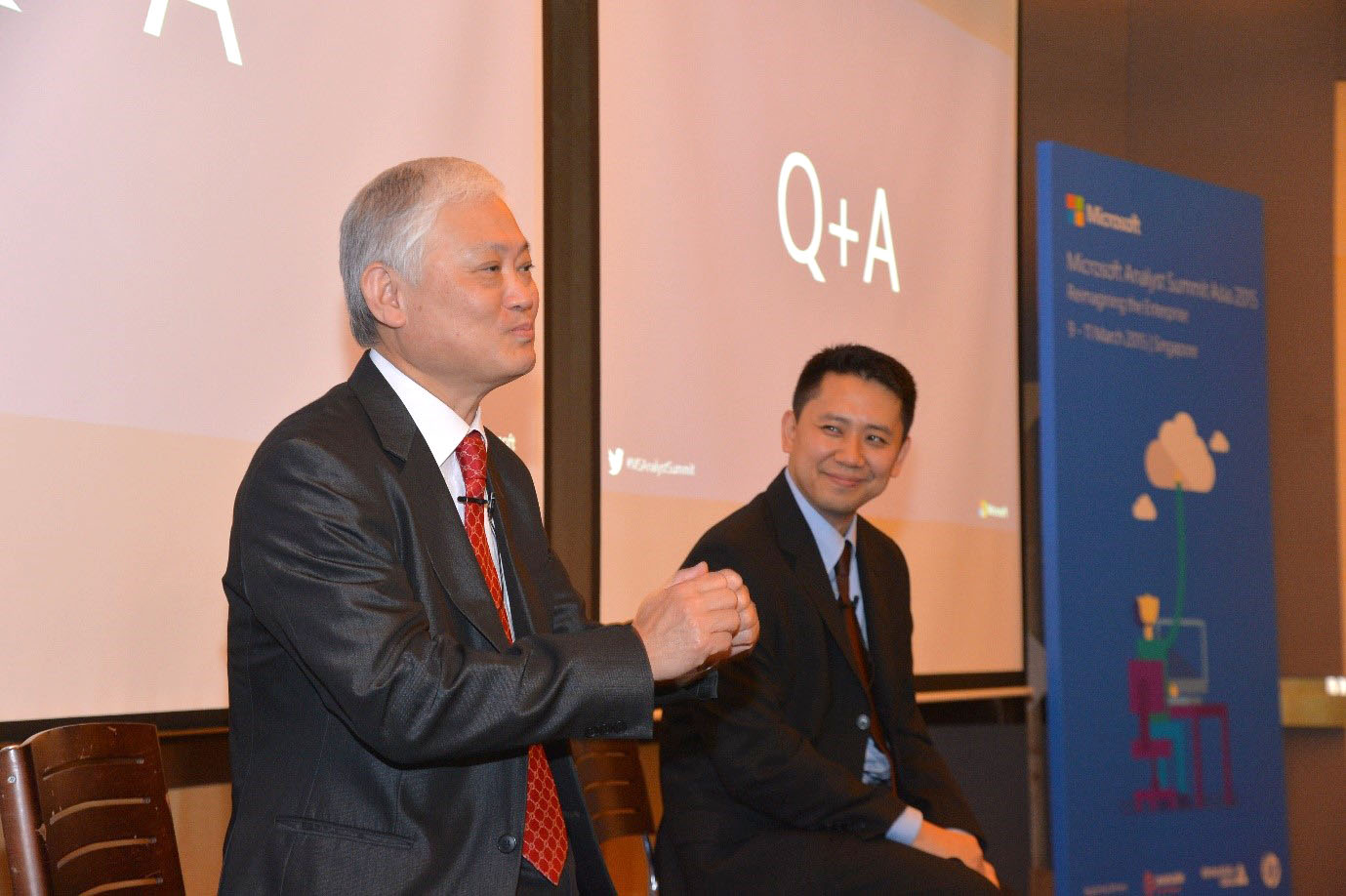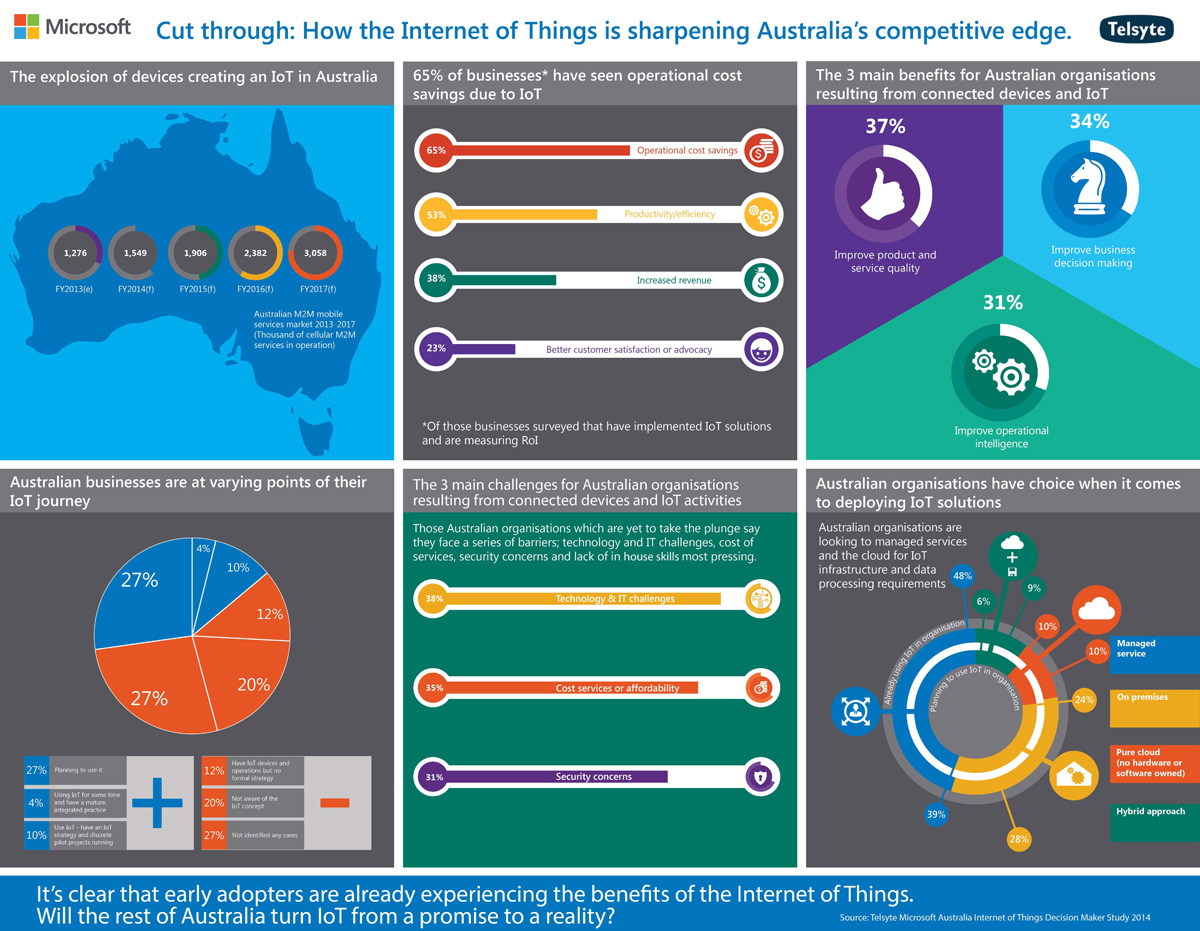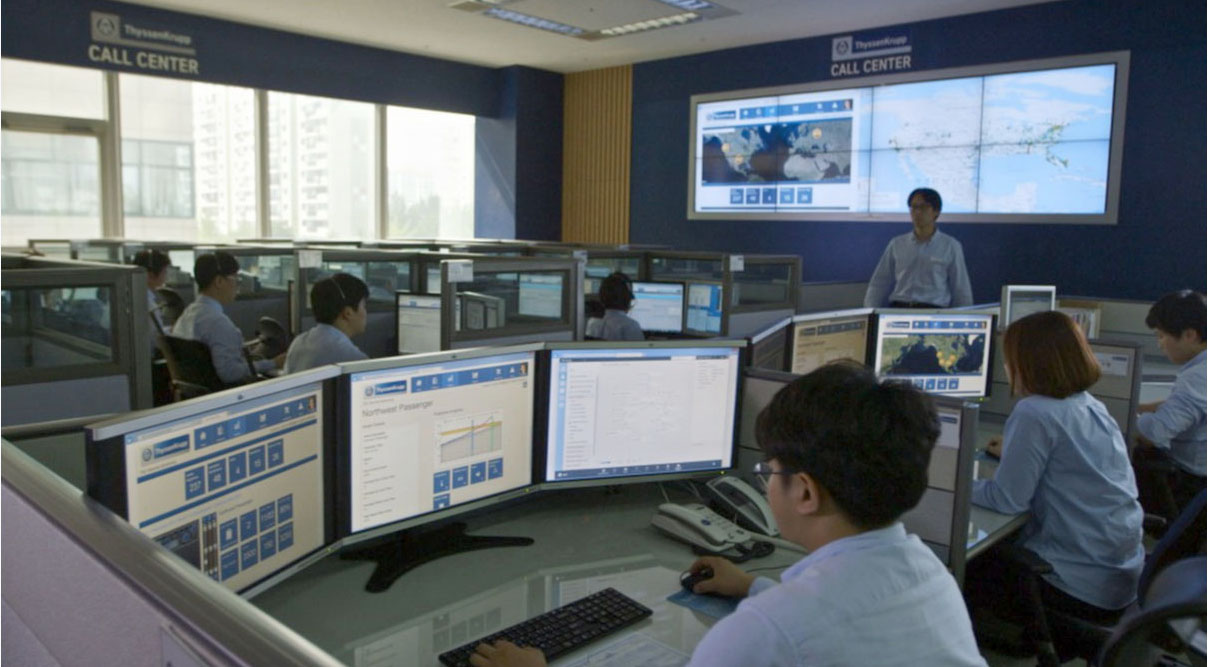Jerry Lee, Global Group Product Manager, Microsoft, and Chaney Ho, President of Advantech, a global provider of embedded and automation products and solutions, took to the stage at the recent Microsoft Analyst Summit Asia 2015 where they discussed the advent of IoT as a mainstream technology with more than 80 attending analysts.
25 billion things – that is the number of devices that Gartner expects to see connected to the Internet by 2020. This is a 5-fold increase from the 4.9 billion devices that are already connected today.
As evinced by the numbers, the Internet of things has without a doubt captured the imagination of organizations and individuals across the globe; with concepts such as driverless cars, automated environmental controls and smart cities all promising to make life more convenient, efficient, and sustainable. The IDC estimates that the IoT market will be worth some US$7.1 trillion by 2020.
“IoT as a term was conceived by a MIT professor almost 20 years ago. Many people still think that the IoT is a thing of the future – and they could not be more wrong,” said Chaney Ho. He asserts that the IoT era is already here. Ho estimates that the IoT market segment in the Asia Pacific which Advantech is addressing is already worth over US$12 million today (excluding devices).
And that’s only the tip of the iceberg. IDC estimates the Asia Pacific market (excluding Japan) will drive IoT services and devices to be worth US$250 billion by 2020.
In October 2014, a Microsoft-sponsored survey of 291 CIOs in Asia Pacific showed that there is a sense of urgency amongst IT leaders in Asia Pacific to take advantage of what IoT has to offer. It is viewed as the second most disruptive technology to organizations in the region; 79 per cent said that they already have or are planning to implement ambient technology solutions. As a result, IoT was ranked 4th in terms of current CIO priorities (after Cloud, Mobility, Big Data) in the next three years.

Indeed, IoT is at an inflection point today. Jerry explained: “There are billions of devices already installed. As the price-point of IoT devices drops further, the proliferation of IoT will continue to grow. Furthermore, as awareness of the advantages of IoT becomes more widespread, so too does demand for solutions. At Microsoft we are already seeing more companies move from initial proof of concepts into full blown deployment of IoT across the enterprise.”
Creating competitive advantage through IoT adoption
The driving force for IoT usage is the desire to make things work better for us. For organizations which are already digital, IoT becomes the gel to connect and harness data harvested from across operations. Bottom line is, IoT enables organizations to be more competitive by being able to innovate faster, create new efficiencies and revenue sources.
In Australia, Dental Corporation deployed IoT to automate reporting processes across 220 offices, giving back precious time for staff at all levels to be more productive.
Jerry explained: “In Asia, one of the fastest growing economies in the world, you have to create competitive advantage very quickly to stand out from your competitors. Leveraging IoT can give companies the leg up they need.”
The advantages of IoT are further exemplified in a recent whitepaper published by analyst firm Telsyte on behalf of Microsoft. It reveals that 65 per cent of Australian organizations that have deployed IoT report operational cost savings at an average of 28 per cent. Furthermore, slightly more than half (53 per cent) reported that IoT adoption resulted in a 29 per cent increase in realized productivity.

Chaney pointed out how the Taiwanese government utilized IoT to drastically reduce commute times along their national highways by replacing manual toll booths with electronic gantries. Originally, drivers using the highway would have to slow down and stop at manual toll booths where they paid their toll and continued along their journey.
With electronic gantries that automatically log the details of vehicles that passed under them, the need for vehicles to slow down, stop to pay tolls at manual booths and then start again was removed. The data collected through the gantries would be collated and bills would be served via mobile banking platforms. With the new platform, Taiwan’s road users save 22.5 million minutes of commute time daily. Fuel usage is reduced by 60 million liters and carbon emissions by 138,000 tons as well.
In another example, ThyssenKrupp Elevator, one of the world’s leading elevator manufacturers, has leveraged IoT to successfully transform how they do business in a digital age. They securely connected hundreds of their “things” – sensors and systems – in their elevators that monitor everything from motor temperature to shaft alignment, cab speed and door functioning; the data they gather; and PCs and mobile devices used by its workforce of technicians — to the cloud with Microsoft Azure IoT services.

This coupled with Microsoft Power BI and Microsoft Azure Machine Learning allows ThyssenKrupp to conduct predictive maintenance and generate new efficiencies in workflow. Elevators can “self-diagnose” and inform technicians of what might be faulty and how to fix it. This reduces the training required for technicians and time spent on maintenance. The ability to conduct predictive maintenance also means that ThyssenKrupp can sell service-level agreements for elevator uptime, which means that the maintenance arm of the company is no longer a cost center, but rather a revenue generating function – effectively transforming how the company does business.
Making IoT a reality today
Microsoft’s vision is to help companies thrive by delivering open, scalable platforms and services that any company, whether start-ups or the most established global enterprises, can use to create new value, right now. Over the last 12 months, Microsoft has accelerated the roll out of its IoT portfolio to support market demands.
Jerry said: “Over the past 12 months Microsoft has been steadily adding new capabilities to Microsoft Azure IoT services to enable customers to build IoT solutions, this includes machine learning and Azure Stream Analytics. Azure Stream Analytics allows for complex event processing while Microsoft Azure Machine Learning drastically simplifies the implementation of machine learning algorithms – effectively enabling a simple one click approach to deploying application program interfaces (APIs).”
Most recently Microsoft unveiled Microsoft Azure IoT Suite, at Microsoft Convergence 2015, an integrated offering that takes advantage of all the relevant Azure capabilities, simplified billing and easy provisioning to help businesses connect, manage and analyze all of their “things.” Available in preview later this year, this new offering will provide businesses with finished applications targeting common IoT scenarios — such as remote monitoring, asset management and predictive maintenance — to simplify deployment and provide the ability to scale their solution to millions of “things” over time.
Enabling an IoT ecosystem in Asia
Software and services are just one part of the equation. Jerry added that Microsoft is moving to enable a partner ecosystem for IoT application and adoption very quickly. “We offer Microsoft Azure IoT services, but we need customers and partners to build on top of that to truly enable customers to unlock great value from their Internet connected things. Microsoft is working to prepare the local partner ecosystems for rapidly increasing demand for IoT,” he said.
One such example would be the Microsoft Quick Start consultations. Under the program Microsoft is working with select partners to provide free half-day consultations to qualifying enterprise customers. Through these sessions, customers learn more about IoT and how they can be applied to their business priorities.
Another example would be Microsoft’s partnership with Advantech, to build Asia’s first IoT WISE-Cloud (Wireless IoT Solutions Embedded-Cloud), which was announced in December 2014. The collaboration enables system integrators in the region to update their legacy IoT solutions to be updated and hosted on the cloud. It also offers them the ability to quickly make use of pre-existing software available on the platform to create bespoke solutions for customers seeking to utilize IoT technology.
Chaney said: “We utilized Azure for its world-class functionality. Azure IoT services offers advanced data analytics and even machine learning, making it highly suitable for industry application. Microsoft’s openness, transparency and high level of customer trust were also key contributors to our enthusiasm to work with the company.”






